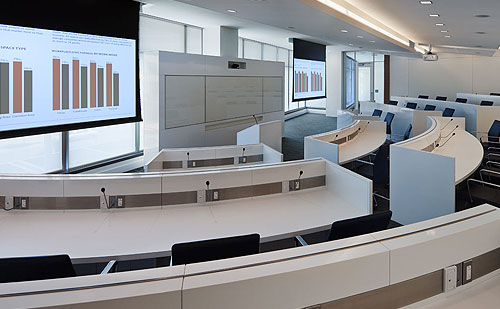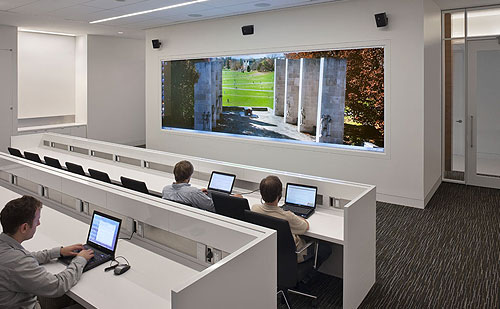Monday, May 26, 2014
Google Acquires Enterprise-Friendly Device Manager Divide
Saturday, May 24, 2014
Raspberry Pi: Five alternatives for hackers and modders
The Raspberry Pi has been the darling of the homebrew hacking and modding community since its launch more than two years ago.
Creative tinkerers have used the $35 Linux board tocook up talking mirrors, drones and automated book readers. The volume of creations has shown the appetite among the maker community for low-cost, energy sipping and versatile boards like the Pi.
While small board computers predate the Pi the market for boards and small form factor PCs is increasingly crowded with machines that bake-in features or performance not offered by the Pi.
Here are five alternatives that attempt to deliver something more than the Pi.
http://www.techrepublic.com/pictures/raspberry-pi-five-alternative-boards-for-hackers-and-modders/1/
Tuesday, May 20, 2014
FreeRDP - RD Gateway client for Linux | ifconfig.dk
So what did I do?– I turned to the wonderful world of opensource software. FreeRDP is an awesome project started by Awake Coding aka Marc-André Moreau. It is still in development so bugs and missing documentation are to be expected. This tutorial will show you how to compile and use FreeRDP to connect through an RD Gateway to a terminal server from Ubuntu 13.10 32 bit.
Wednesday, May 14, 2014
Chasing Unicorns: How to Find 'Blended' IT-Business Pros
With the largest IT budget in the world at her disposal, you might think the CIO of the Department of Defense could just order up whatever IT talent she needs. Yet Teri Takai encounters the same challenge that technology chiefs in every industry wrestle with today: finding that elusive "blended" IT-business professional.
"It's hard for tech people--even middle manager on up to senior managers--to think the way that the business thinks," she points out. "They tend to explain things from their own perspective."
These days, the ideal IT manager is seen as someone deeply technical yet business savvy, wonderfully communicative and, of course, a strategic thinker. In other words, as mythic a creature as a unicorn. "This talent issue is hardly new," writes Stephanie Overby in our cover story ("CIOs Struggle with the Great Talent Hunt"). "IT leaders have preached the importance of the blended IT professional for years. But after a decade, it's clear that help is not on the way."
Tuesday, May 13, 2014
Friday, May 9, 2014
3 Ways Mobile Identity Management Improves BYOD Security
One emerging technology that can reinforce Bring Your Own Device (BYOD) security is mobile identity management. Some vendors refer to it as mobile identity management and authentication. I've even seen some analysts go as far as calling it Bring Your Own Identity.
Mobile identity management creates a digital identity for mobile users that can function as a focal point for mobile security. It's a great addition to your existing BYOD security stack of:
- Mobile device management;
- Mobile application management; and
- Mobile content management.
Here are three ways mobile identity management can improve your BYOD security.
Thursday, May 8, 2014
Senator Schumer calls for Congressional oversight and end of “cookie jar” practices by state governors at Port of New York and New Jersey
To clean up the mess, Schumer proposed a seven-point makeover of the agency, which would include:
- The executive director should be elected by the board, not appointed by a governor, as opposed to the current shared bistate leadership with the executive director splitting control with the agency chairman and the deputy executive director;
- The commissioners need to be selected for their expertise, not their political links;
- More transparency in finances and contracts could reduce conflicts of interest, with at least an annual review;
- Billions of dollars should not be spent on projects that generate no revenues, and there should be a ban on spending agency money on projects in either state;
- And the agency's board of commissioners should choose its executive director.
Wednesday, May 7, 2014
HCL:ARMChromebook - openSUSE
- Put your Chromebook into developer mode.
- Open a root shell: login to ChromeOS, open crosh with 'ctrl-alt-t', start a real shell with 'shell', become root with 'sudo -i'
- Enable USB/SD booting by running the following command as root from ChromeOS.
"crossystem dev_boot_usb=1" - Download the latest image athttp://download.opensuse.org/repositories/devel:/ARM:/12.3:/Contrib:/Chromebook/images/and choose between:
- JeOS image (1GB) for a minimal system openSUSE-12.3-ARM-JeOS-chromebook-*.raw.xz or
- XFCE image (4GB) for a graphical system openSUSE-12.3-ARM-XFCE-chromebook-*.raw.xz
- As root extract the image onto your SD-Card or USB drive (replace sdX with the device name of your SD-Card or USB drive). WARNING: all previous data on the SD-Card or USB drive will be lost.
Tuesday, May 6, 2014
Target CEO departure watershed for IT, business alignment
Target CEO Gregg Steinhafel's departure from the retailer following a massive data breach that damaged the company's reputation could be a watershed moment for information technology and business alignment.
Simply put, IT is your business and massive failures even cost the big dogs their jobs. Technology execs have worried about business alignment forever. Stop worrying because business and IT are aligned. If IT blows up---or 110 million customer accounts are breached---so does the business.
Thursday, May 1, 2014
Virginia Tech - CMS AudioVisual | CMS AudioVisual
Virginia Tech
Virginia – A research center complete with a huge 3D wall and full conference center.
Architect: Gensler
![]()

![]()

![]()

![]()

![]()
